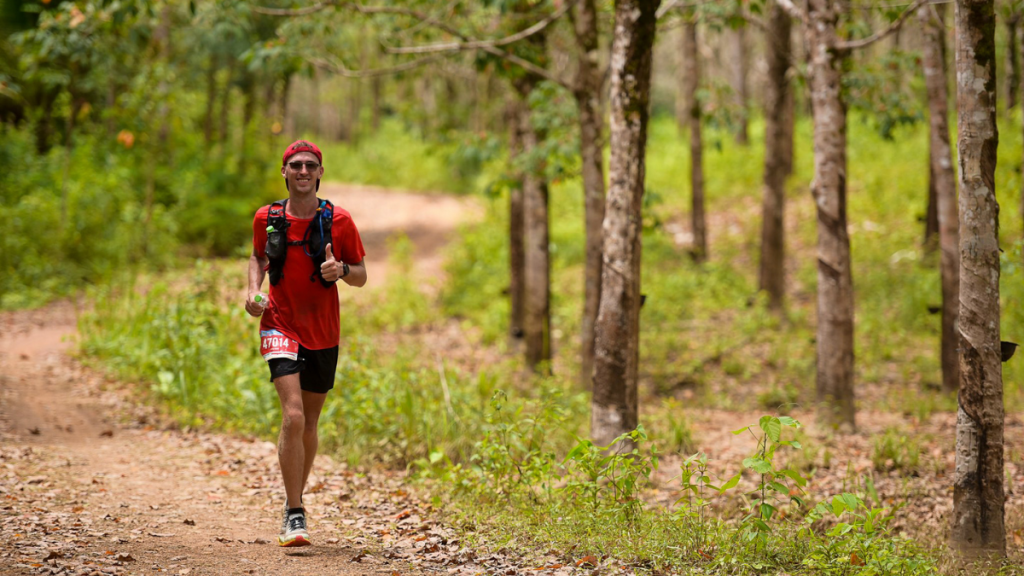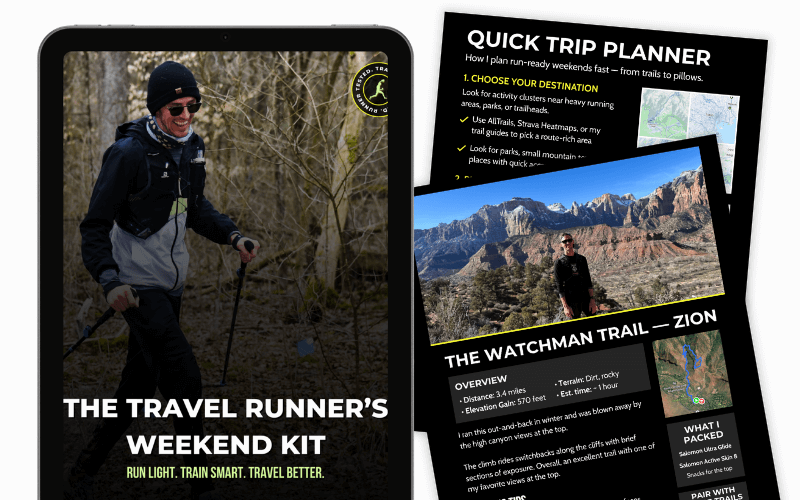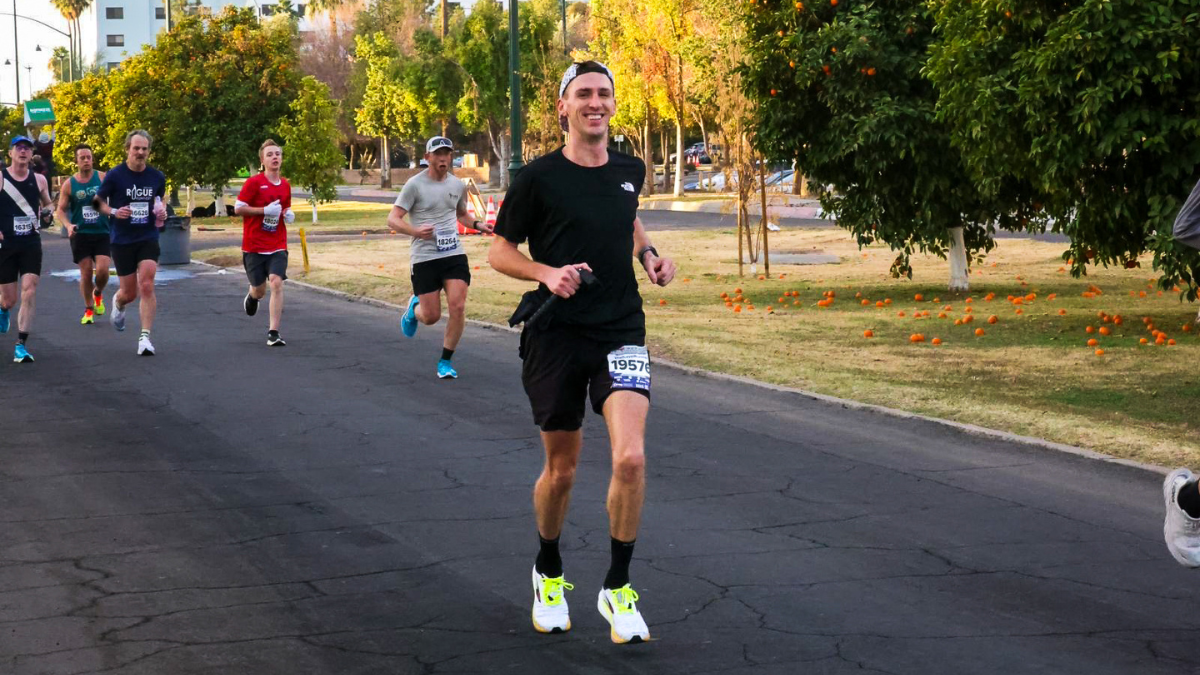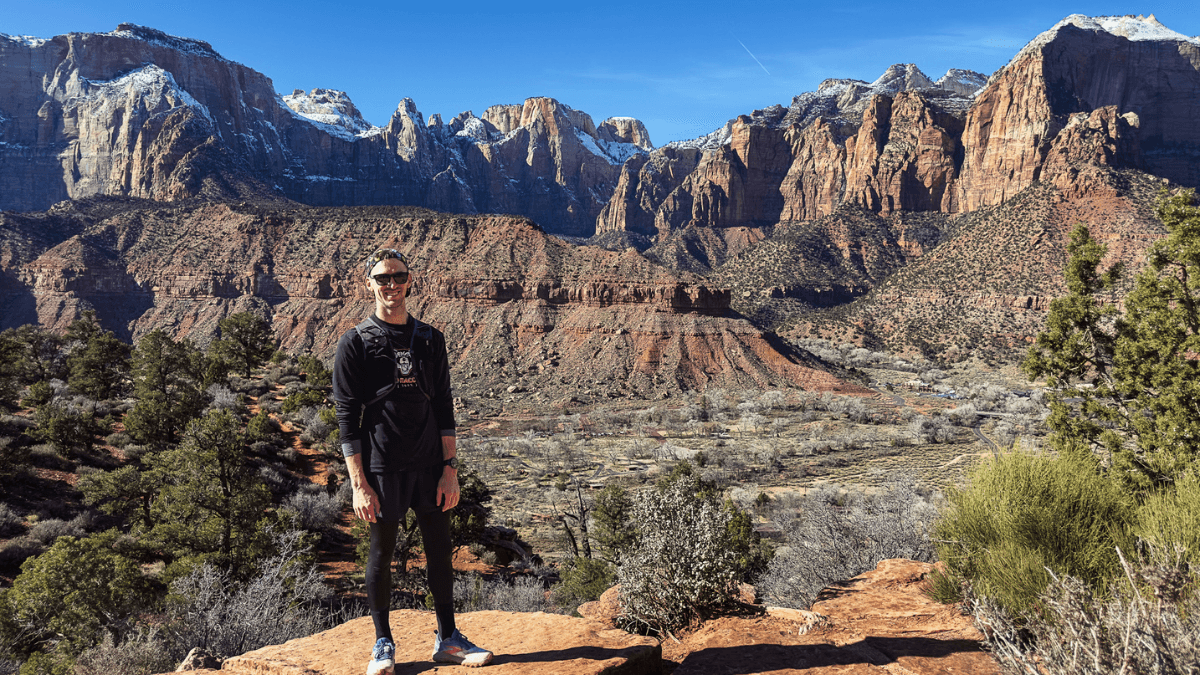Training on the Go
The first mile of a run can be pure torture.
You’re gasping for oxygen, your legs have turned to lead, and running even one step further seems impossible. But then, somewhere around mile two, things get easier. Your stride lengthens, your breathing evens, and you start running like Usain Bolt. (Well, our version, anyway).
Why is that first mile always the hardest?
Turns out, there are a few key reasons behind this common runner’s complaint, both physiological and mental. Let’s explain why that first mile is always the hardest and how to ease into your run to make it easier.
5 Reasons Why The First Mile Is the Hardest
1. Warmup Wasn’t Long Enough
Your muscles are like a cold engine on a winter morning.
They need time to get up to speed and work efficiently. And jumping into your run without a proper warmup is like expecting your car to hit highway speeds the second you turn the key.

That sluggish feeling you often feel in your legs during the first mile of your run? That’s your body warming up to the fast start.
Not to mention, skipping the warmup also increases your risk of injury.
2. Your Body Is Shifting Energy Systems
There are also physiological reasons behind the struggles at the start of your training run.
When you begin your run, you’re in a relatively relaxed state (called an anaerobic state). Your body has lower levels of oxygen, at least for a run.
But, a run is a very oxygen-high activity. Your body needs time when going from a restful state to an oxygen-demanding state for exercise. It starts your run without enough oxygen and starts ramping it up as you go (that and you breathe harder to bring in more).
And with that is the demand on your heart and blood vessels.
Your heart has to increase its output dramatically to get oxygen to the muscles that need it most, which works into that sluggish feeling.
3. You Started Too Fast
Raise your hand if you never start your run too hard.
Arguably, there shouldn’t be a single hand raised. I’ve done (and still do) this plenty. And I get that reminder every time as I’m huffing and puffing.
Overshooting your pace makes that transition from anaerobic to aerobic energy systems even more painful!

Plus, starting too fast plays tricks on your mind. You just started your run, yet you already feel you’re fading. It can get frustrating as you struggle to wrap your mind around it.
Want to avoid this trap? Check the tips further down the page.
4. Endorphins Haven’t Kicked in Yet
Endorphins are like your body’s natural reward system.
They’re those feel-good chemicals responsible for that blissful runner’s high feeling some experience during or after a long run.

But here’s the thing — your brain doesn’t just start pumping them out the second you lace up your shoes. It takes time for them to hit your bloodstream and start the feel-good process.
One good thing: your body may get more efficient at producing endorphins the more you run!
5. It Takes Time for Your Mind to Get Into It
Starting a run can be a major disruption to your day.

Your brain is focused on whatever you did beforehand — work, chores, or maybe sleeping if you’re a morning runner. It takes time for the mental gears to shift into “run mode.” Those early miles are often less about physical limitations and more about focusing your mind on the task at hand.
But as the miles go, your brain starts focusing on the task and the miles flow by!

Plan your next runcation without overthinking it
A free, runner-tested weekend kit with:
- A simple trip-planning framework
- A packing checklist that actually works
- A quick decision guide for short travel runs
Tips to Make the First Mile Easier
Warm Up With Dynamic Stretches
Forget the static stretches (like touching your toes) when prepping for a run.
Dynamic movements mimic running motions, prepping your muscles and joints for what’s to come. Think of this as revving your body’s engine instead of just letting it idle!
Here are a few runner favorites to get you started (which are great for trail running or road running).
(Remember, the focus is on smooth, controlled movements, not pushing to the edge of your flexibility.)
- High Knees: With each step forward, exaggerate the lift, bringing your knees up towards your chest.
- Butt Kicks: The opposite of high knees! Focus on bringing your heel as close to your glutes as possible with each step.
- Walking Lunges: A great way to loosen up those hips and thighs. Maintain an upright torso as you step forward, lowering your back knee until it almost touches the ground.
Need more options? Check out this Runner’s World article or search for “dynamic warm-up for runners,” you’ll find plenty of additional moves and routines to try.
Walk Then Run
Ditch the temptation to hit your running pace the second you step out the door.
A brief walk warmup gives your body and mind time to adjust, making that first mile less of a struggle. Your heart rate rises gradually, prepping you for that smooth transition into your aerobic running state.
Walking for 5 minutes (roughly half a kilometer) is a good starting point for many runners before transitioning into an easy jog.
Don’t be afraid to add walking breaks later in your run if needed — it’s about finding what works for YOU!
Add Strength Training
Strength training helps runners in all areas of life. And it’s no different if you’re getting back into it.
Even starting with something small can help build toward a more well-rounded running experience. Combine the tips above with regular strength training, and that first mile won’t be a problem before you know it.
Ready to Put On Your Running Shoes?
That first mile might always be challenging, but it doesn’t have to be miserable.
Understanding why your body puts up a fight at the start gives you a major advantage!
Now, you’re armed with simple strategies to make those early minutes feel far less daunting. Remember, a short walk, a few dynamic stretches, and a patient mindset are your keys to success.
So, whether you’re just beginning a running program or you’re an experienced runner, make sure you warm up and have a smooth run!

Kyle Cash | Trail Journal
I’m Kyle — the runner behind The Travel Runner. I run trails all over the world to bring you stories, tips, and gear that actually works. From national parks to forgotten paths, I’ve got mud on my shoes and too many snacks in my pack.
Let’s go find new ground.


Leave a Reply